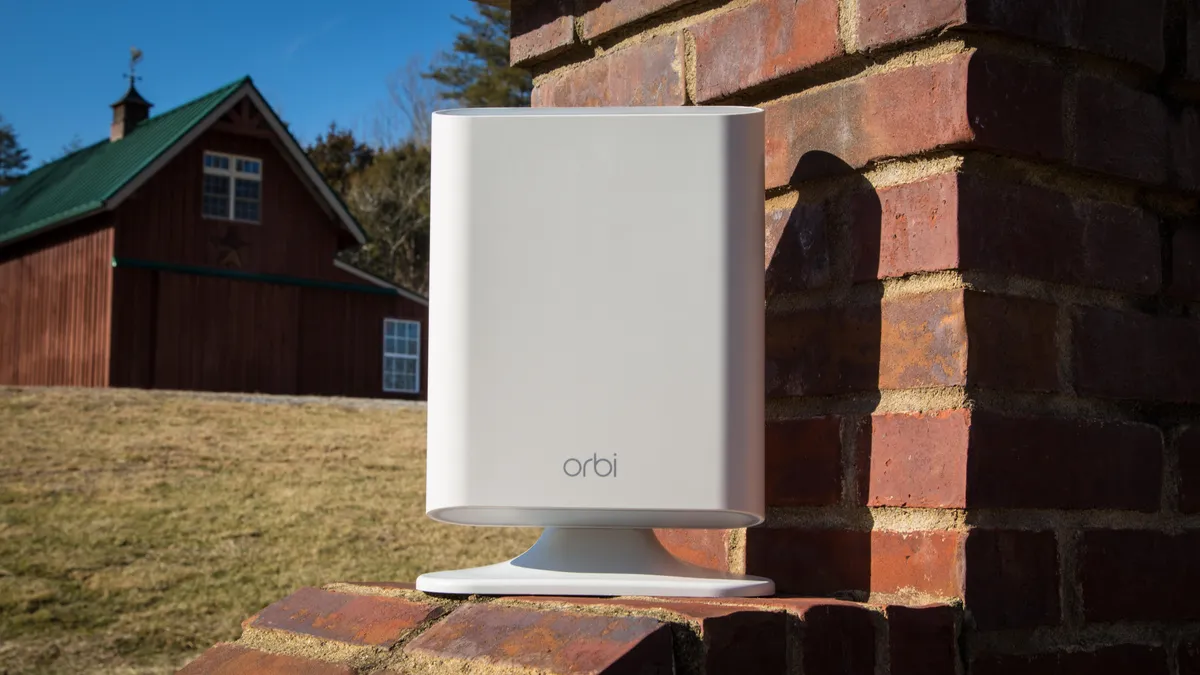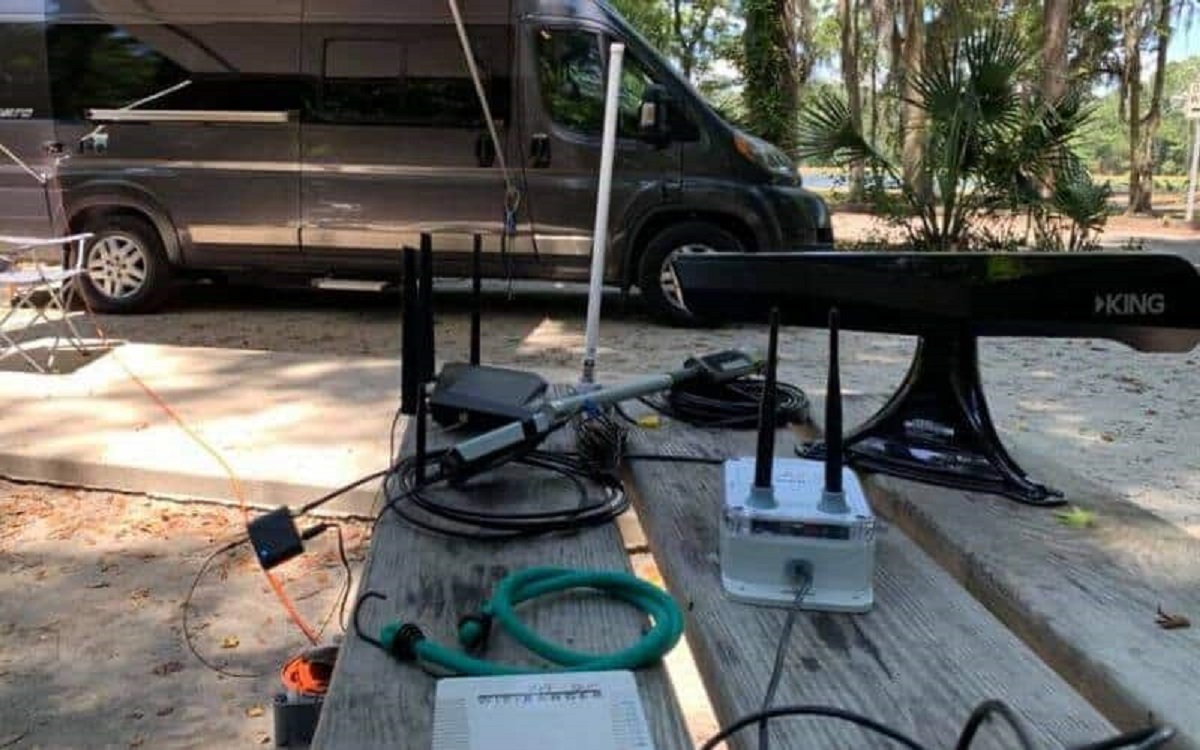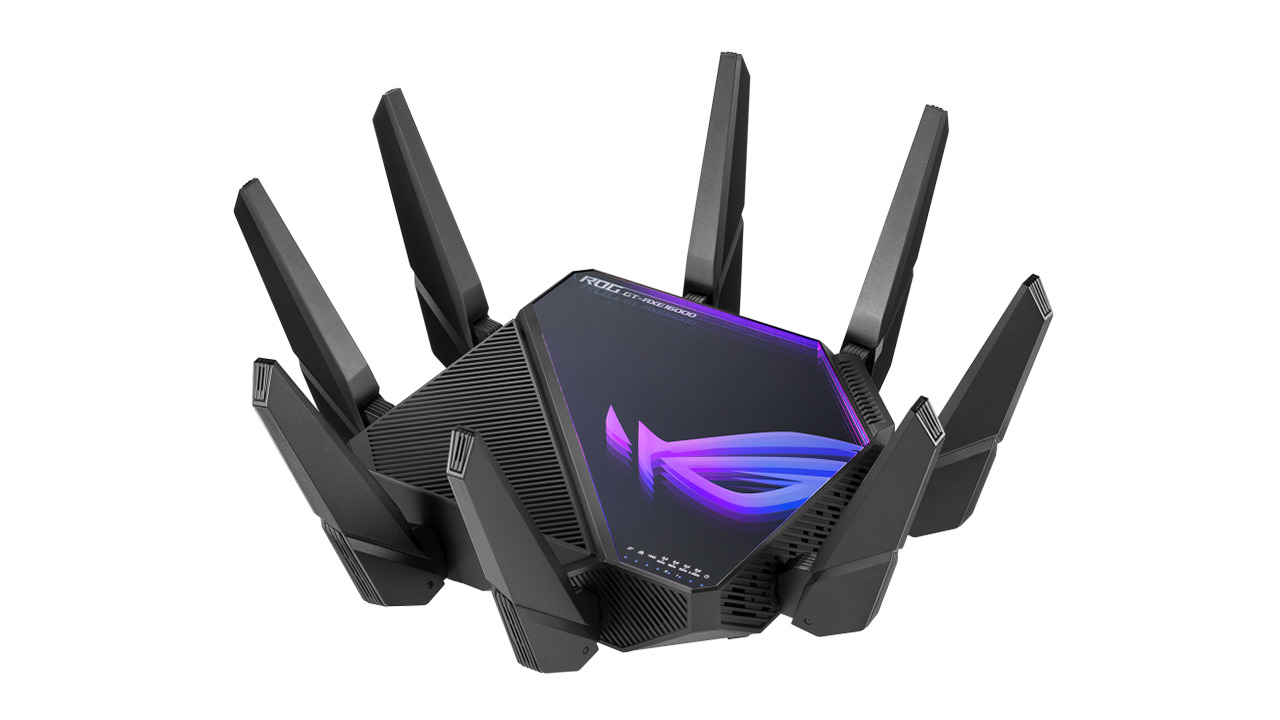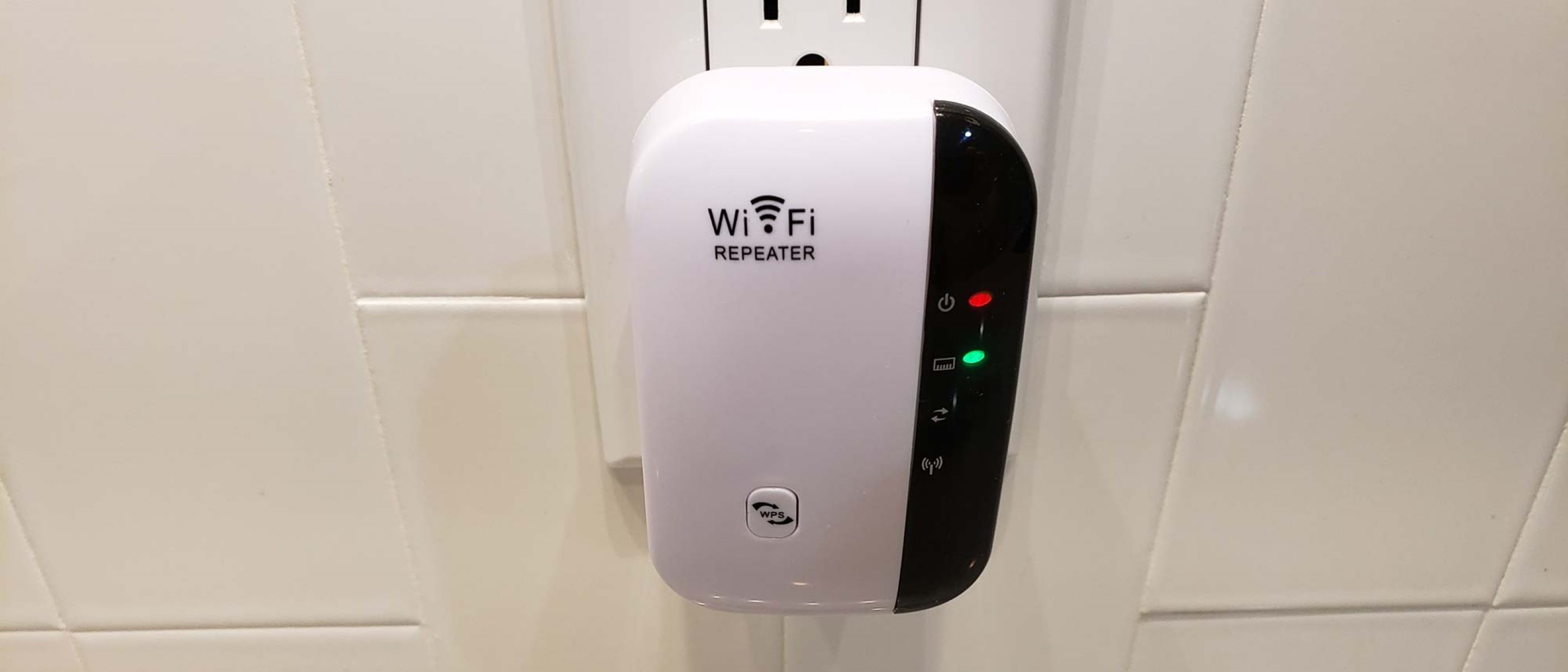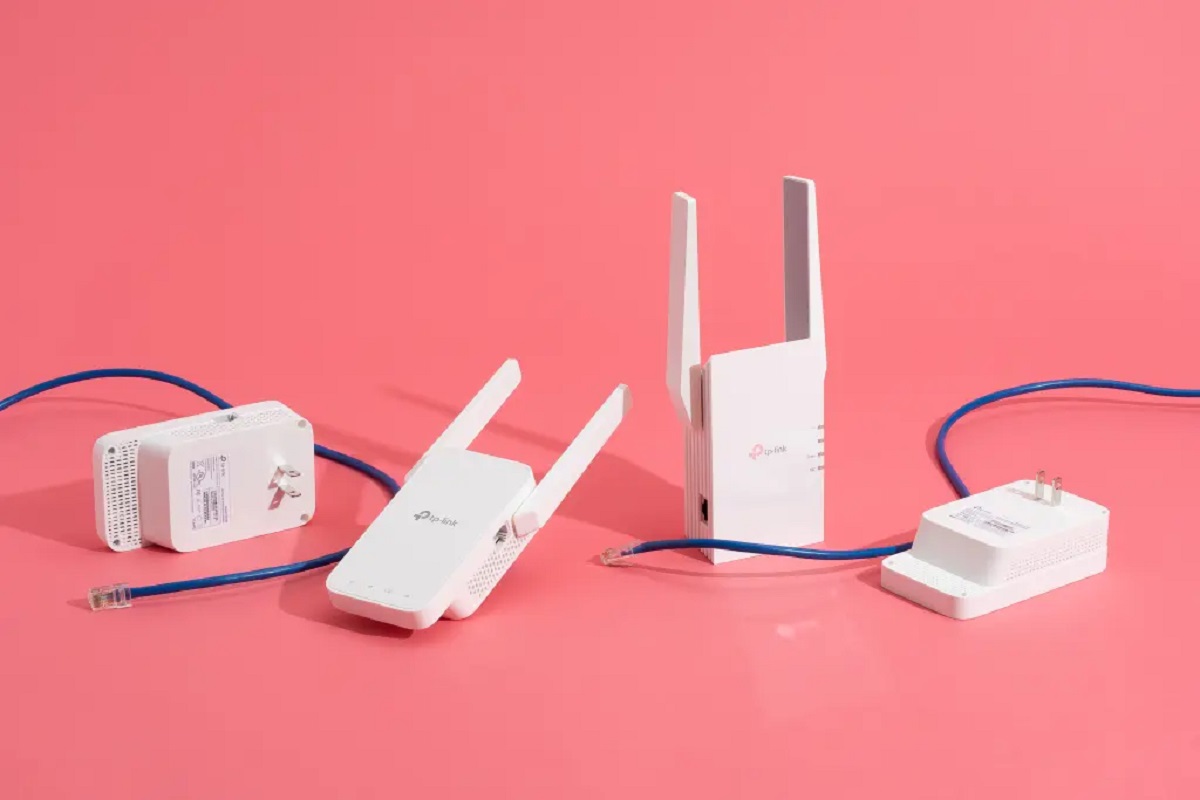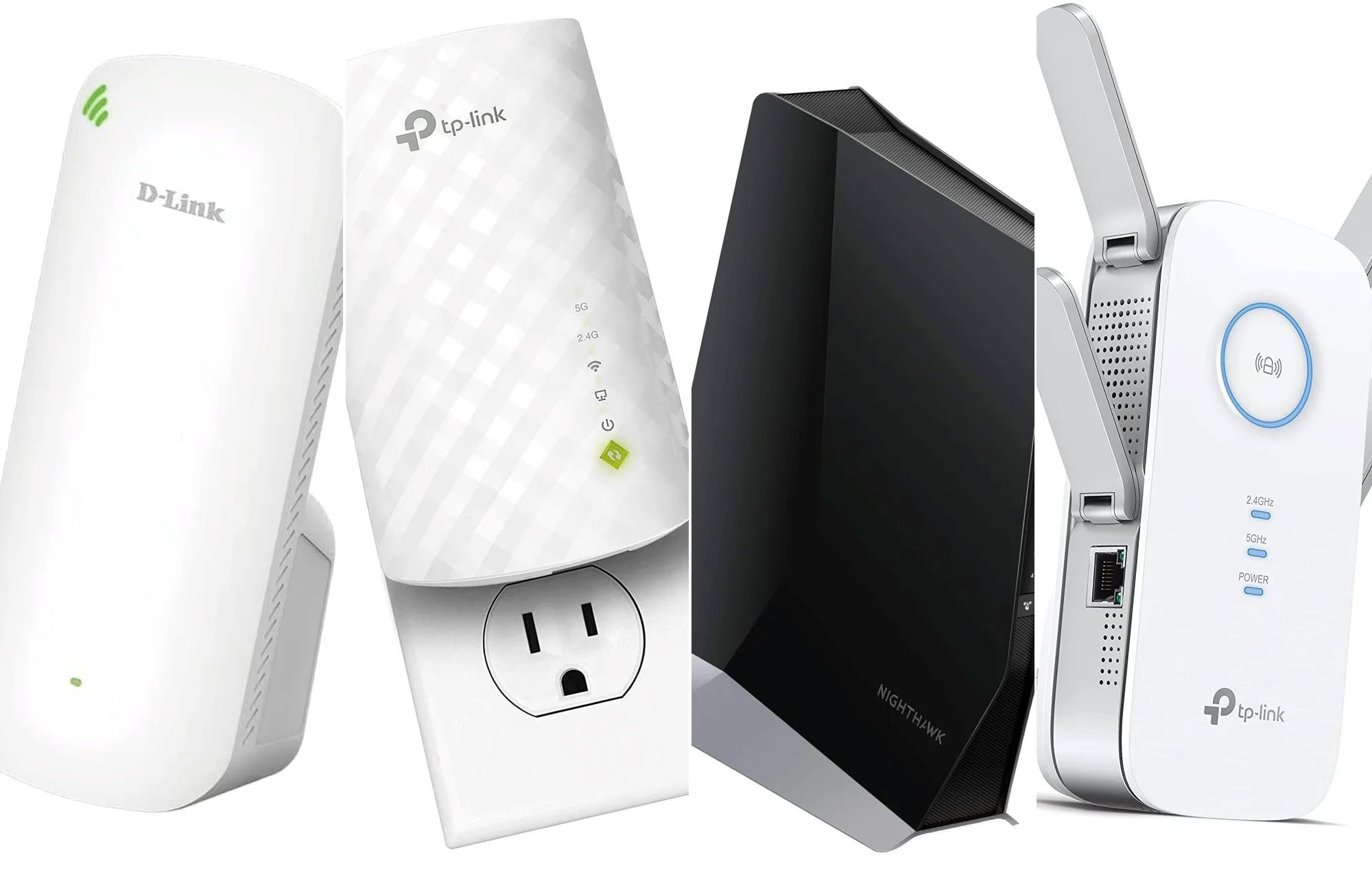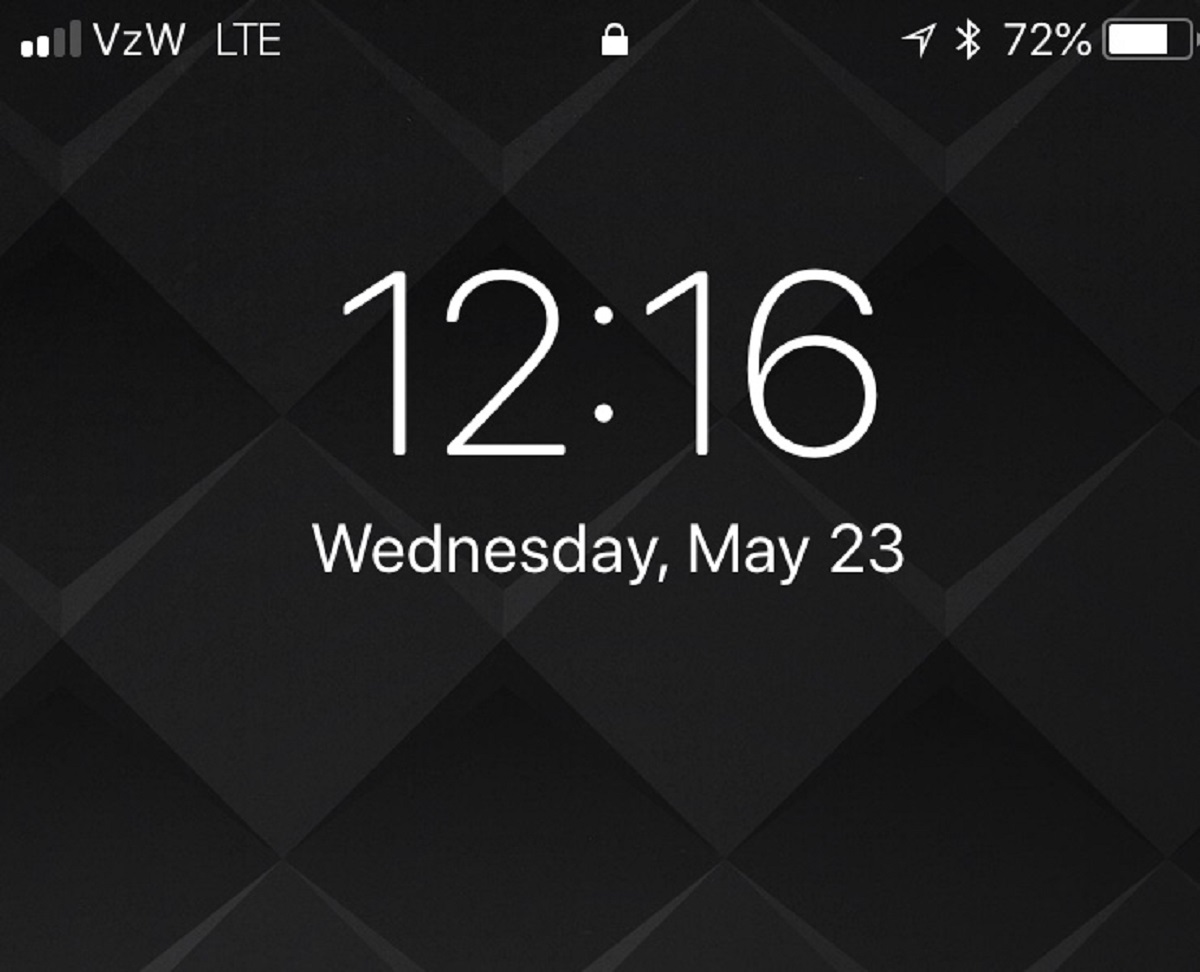Introduction
Welcome to our guide on how to extend the WiFi range outside. With the increasing demand for seamless connectivity, having a stable and reliable WiFi signal in outdoor areas has become more important than ever. Whether you want to enjoy internet access on your patio, in your backyard, or even by the poolside, extending your WiFi range can make it possible.
Often, the WiFi signal strength diminishes as we move farther away from the router or access point. This can make it challenging to enjoy a strong and stable connection outside, limiting our ability to work, stream videos, or stay connected with friends and family. Luckily, there are solutions available to help extend your WiFi range and bring the internet outdoors.
In this guide, we will walk you through the process of assessing your current WiFi range, choosing the right outdoor WiFi extender, properly placing the extender, and providing additional tips to boost your WiFi signal strength. We will also discuss the importance of securing your outdoor WiFi network to ensure your data remains safe.
Before we dive into the details, it’s essential to note that extending your WiFi range outside requires some technical knowledge and equipment. If you’re not comfortable with technology, you may want to seek assistance from a professional or a knowledgeable friend. However, don’t worry – we will explain everything step by step to make it as straightforward as possible.
So, let’s get started on extending your WiFi range outside and enjoy the internet in every corner of your property!
Assessing Your Current WiFi Range
Before you can begin extending your WiFi range outside, it’s essential to evaluate your existing WiFi coverage. This will help you understand the areas with weak or no WiFi signal and determine the best approach for improving the range.
Start by locating the WiFi router or access point in your home. Typically, it’s placed near your modem or in a central area. Take note of its location and make a rough estimate of how far the WiFi signal reaches before it becomes weak or unreliable.
Next, it’s time to test the WiFi signal strength at various points throughout your property, especially in the areas where you want to extend the coverage. One way to do this is by using a WiFi analyzer app on your smartphone or tablet. These apps show you the signal strength of nearby WiFi networks and can help you identify dead zones or areas with weak signals.
Walk around your property and take measurements of the WiFi signal strength in different areas, paying attention to any significant drop-offs or interference from walls, furniture, or other obstacles.
Once you have assessed the WiFi signal strength in different areas, it’s helpful to create a simple diagram or map of your property. Mark the areas with good signal coverage and those with weak or no coverage. This visual representation will be useful when choosing the right outdoor WiFi extender and determining its placement for optimal coverage.
Remember, the aim is to extend the WiFi range to the areas outside your home where you want to have a reliable connection. By assessing your current WiFi range, you’ll have a clear understanding of the areas that require improvement and can plan accordingly.
To summarize, assessing your current WiFi range involves locating your WiFi router or access point, testing the signal strength at various points on your property, and creating a map to identify areas with weak or no WiFi coverage. This assessment will serve as a foundation for extending your WiFi range outside.
Choosing the Right Outdoor WiFi Extender
Now that you have assessed your current WiFi range, it’s time to choose the right outdoor WiFi extender to expand your coverage outside. When selecting an extender, there are a few key factors to consider:
1. Compatibility: Ensure that the outdoor WiFi extender you choose is compatible with your existing WiFi router or access point. Check the specifications and compatibility information provided by the manufacturer to ensure they are compatible with your current equipment.
2. Range: Look for an outdoor extender that offers a significant boost in range. Consider the size of your outdoor space and the distance you need to cover to select an extender with the appropriate range. Keep in mind that the range may be affected by environmental factors such as walls, trees, or other obstacles.
3. Speed and Bandwidth: Consider the speed and bandwidth capabilities of the extender. If you plan on using the extended WiFi connection for activities that require high-speed internet, such as streaming or online gaming, make sure the extender supports the necessary speed and bandwidth requirements.
4. Weatherproofing: Since the extender will be placed outside, it’s crucial to choose one that is designed to withstand outdoor conditions. Look for an outdoor WiFi extender with weatherproof or waterproof features to ensure it can handle exposure to rain, sun, and other elements.
5. Ease of Installation: Consider the ease of installation and setup process. Look for an extender that comes with clear instructions and user-friendly features to make the installation process as smooth as possible. Some extenders may also offer mobile apps or web interfaces for easy configuration.
6. Brand Reputation and Reviews: Research different brands and read customer reviews to get an idea of the reliability and performance of various outdoor WiFi extenders. Look for reputable brands known for their quality and customer satisfaction.
By considering these factors, you can make an informed decision and choose the right outdoor WiFi extender that meets your specific needs.
In the next section, we will discuss the proper placement of the outdoor WiFi extender, which is crucial in maximizing its effectiveness and extending the WiFi range outside.
Proper Placement of Outdoor WiFi Extender
Once you have chosen the right outdoor WiFi extender, it’s important to properly place it to ensure optimal coverage and maximum signal strength. Here are some key considerations for the placement of your outdoor extender:
1. Line of Sight: Try to maintain a clear line of sight between the extender and your existing WiFi router or access point. This means minimizing any physical obstructions such as walls, trees, or large objects that could block or weaken the WiFi signal. The fewer obstacles in the way, the better the signal strength will be.
2. Height and Elevation: Mounting the outdoor WiFi extender at an elevated position, such as on a wall or a post, can help improve the signal’s reach and reduce interference. Placing it higher up achieves a more extensive coverage area. However, make sure it’s within a feasible range for connection to your existing WiFi network.
3. Directional Antennas: If your outdoor WiFi extender has directional antennas, adjust them to focus the signal towards the areas where you want to extend the WiFi range. This can help direct and concentrate the signal in the right direction, enhancing coverage in those specific areas.
4. Avoid Interference: Keep the extender away from other electronics or devices that could cause interference, such as cordless phones, microwave ovens, or Bluetooth devices. These devices can disrupt the WiFi signal and reduce its strength. By minimizing interference, you can ensure a more stable and reliable connection.
5. Weatherproofing: If your outdoor WiFi extender is not already weatherproofed, consider using protective enclosures or covers to shield it from rain, sun, and other outdoor elements. This will help prolong its lifespan and maintain its performance in different weather conditions.
6. Test Signal Strength: After placing the outdoor WiFi extender, test the signal strength in the areas where you want to extend the WiFi range. Use the WiFi analyzer app or simply connect to the extended network with your devices to verify the signal strength. Adjust the placement or antenna direction if necessary to optimize the signal coverage.
By following these placement guidelines, you can ensure the outdoor WiFi extender is positioned for maximum signal strength and extended WiFi range outside your home.
In the next section, we will provide additional tips for boosting WiFi signal strength both indoors and outdoors.
Tips for Boosting WiFi Signal Strength
Having a strong and reliable WiFi signal is crucial for a seamless internet experience both indoors and outdoors. Here are some tips and tricks to boost your WiFi signal strength:
1. Position your WiFi router centrally: Place your WiFi router in a central location within your home, away from walls and obstructions. This helps distribute the signal evenly and ensures maximum coverage.
2. Avoid interference: Keep your WiFi router away from devices that can cause interference, such as cordless phones, microwave ovens, baby monitors, and Bluetooth devices. These can disrupt the WiFi signal and degrade its performance.
3. Update your router’s firmware: Regularly check for firmware updates for your WiFi router and install them if available. These updates often include performance enhancements and bug fixes that can improve your WiFi signal strength.
4. Use a WiFi range extender or mesh system: Consider adding a WiFi range extender or a mesh network system to your setup. These devices help amplify the WiFi signal and extend the coverage throughout your home, including outdoor areas.
5. Optimize WiFi channel selection: Use a WiFi analyzer app to determine which WiFi channels are least congested in your area. Set your router’s channel to one with the least interference to enhance signal strength and reduce network congestion.
6. Upgrade your WiFi router or antenna: If your current WiFi router is outdated or cannot provide the desired coverage, consider upgrading to a newer model with better range and performance. Alternatively, you can replace the router’s antennas with high-gain antennas to improve signal strength.
7. Reduce WiFi signal interference: If possible, move electronic devices that emit signals, such as cordless phones or baby monitors, away from your WiFi router to minimize interference.
8. Adjust WiFi router settings: Access your WiFi router’s settings and experiment with different settings such as channel width, transmission power, or QoS (Quality of Service) settings. Fine-tuning these settings can improve the WiFi signal strength and stability.
9. Use wired connections: For devices that require a stable and high-bandwidth connection, such as gaming consoles or desktop computers, consider using Ethernet cables instead of relying on WiFi. This reduces signal loss and provides a more consistent connection.
10. Regularly restart your router: Rebooting your WiFi router periodically can help resolve temporary glitches and improve its overall performance.
By implementing these tips, you can enhance your WiFi signal strength both indoors and outdoors, ensuring a seamless browsing and streaming experience.
In the next section, we will discuss the importance of securing your outdoor WiFi network to protect your data and maintain privacy.
Securing Your Outdoor WiFi Network
Securing your outdoor WiFi network is crucial for protecting your data, ensuring privacy, and preventing unauthorized access. Here are some essential steps to secure your outdoor WiFi network:
1. Change the default router login credentials: The default login credentials for your WiFi router are often easily guessable. Change the username and password to unique, strong credentials to prevent unauthorized access to your router’s settings.
2. Enable network encryption: Set up network encryption, such as WPA2 (or WPA3 for newer routers), to encrypt the data transmitted over your WiFi network. This ensures that only authorized devices can access and decode the data.
3. Use a strong WiFi password: Create a strong and unique password for your WiFi network. Avoid using common phrases or easily guessable passwords. Include a combination of uppercase and lowercase letters, numbers, and special characters to make it harder to crack.
4. Disable SSID broadcasting: Disable the broadcasting of your WiFi network’s SSID (Service Set Identifier) so that it is not visible to others. This adds an extra layer of security by making your network more challenging to discover.
5. Enable MAC address filtering: MAC address filtering allows you to control which devices can connect to your WiFi network. Add the MAC addresses of your authorized devices to your router’s whitelist and restrict access to only those devices.
6. Regularly update router firmware: Keep your WiFi router’s firmware up to date by installing the latest available updates. These updates often include security patches to address vulnerabilities and protect against potential threats.
7. Disable remote management: Disable the remote management feature on your WiFi router to prevent unauthorized access from outside your network. This feature allows you to manage your router’s settings remotely, but it can also pose a security risk if not properly secured.
8. Set up a guest network: If your router supports it, create a separate guest network for visitors to use when accessing your outdoor WiFi. This network should have limited access to your main network and its devices, protecting your privacy and reducing the risk of unauthorized access.
9. Use a firewall: Enable the built-in firewall features on your router to provide an additional layer of protection against external threats. A firewall monitors and filters incoming and outgoing network traffic, preventing unauthorized access and potential attacks.
10. Monitor connected devices: Regularly check the connected devices list on your router’s administrative interface. If you notice any unfamiliar or suspicious devices, investigate and take appropriate action to secure your network.
By following these steps, you can significantly enhance the security of your outdoor WiFi network, protecting your data and maintaining your privacy.
In the next section, we will conclude our guide on extending WiFi range outside and recap the key points discussed.
Conclusion
Extending your WiFi range outside can greatly enhance your internet experience and allow you to stay connected in outdoor areas. By assessing your current WiFi range, choosing the right outdoor WiFi extender, and properly placing it, you can enjoy a strong and reliable WiFi signal even in your backyard or patio.
In this guide, we discussed the importance of evaluating your current WiFi range and identifying areas that require improvement. We also provided tips for choosing the right outdoor WiFi extender that suits your specific needs, including compatibility, range, speed, and weatherproofing.
Properly placing your outdoor WiFi extender is essential for optimal coverage and signal strength. We discussed the significance of maintaining a clear line of sight, elevating the extender, using directional antennas, avoiding interference, and weatherproofing it for durability.
To further enhance your WiFi signal strength, we provided additional tips such as positioning your WiFi router centrally, minimizing interference, updating firmware, using a WiFi range extender or mesh system, optimizing channel selection, and using wired connections for stability.
Securing your outdoor WiFi network is critical for protecting your data and privacy. By changing default login credentials, enabling network encryption, using strong passwords, disabling SSID broadcasting, enabling MAC address filtering, updating router firmware, disabling remote management, setting up a guest network, and using a firewall, you can safeguard your network from unauthorized access.
Remember, extending your WiFi range outside requires some technical knowledge and equipment. If you’re uncertain, consider seeking assistance from a professional to ensure a successful setup.
With the steps and tips outlined in this guide, you can extend your WiFi range outside and enjoy a stable and reliable internet connection in your outdoor spaces. So go ahead, set up your outdoor WiFi extender, secure your network, and make the most of your internet access in every corner of your property!







